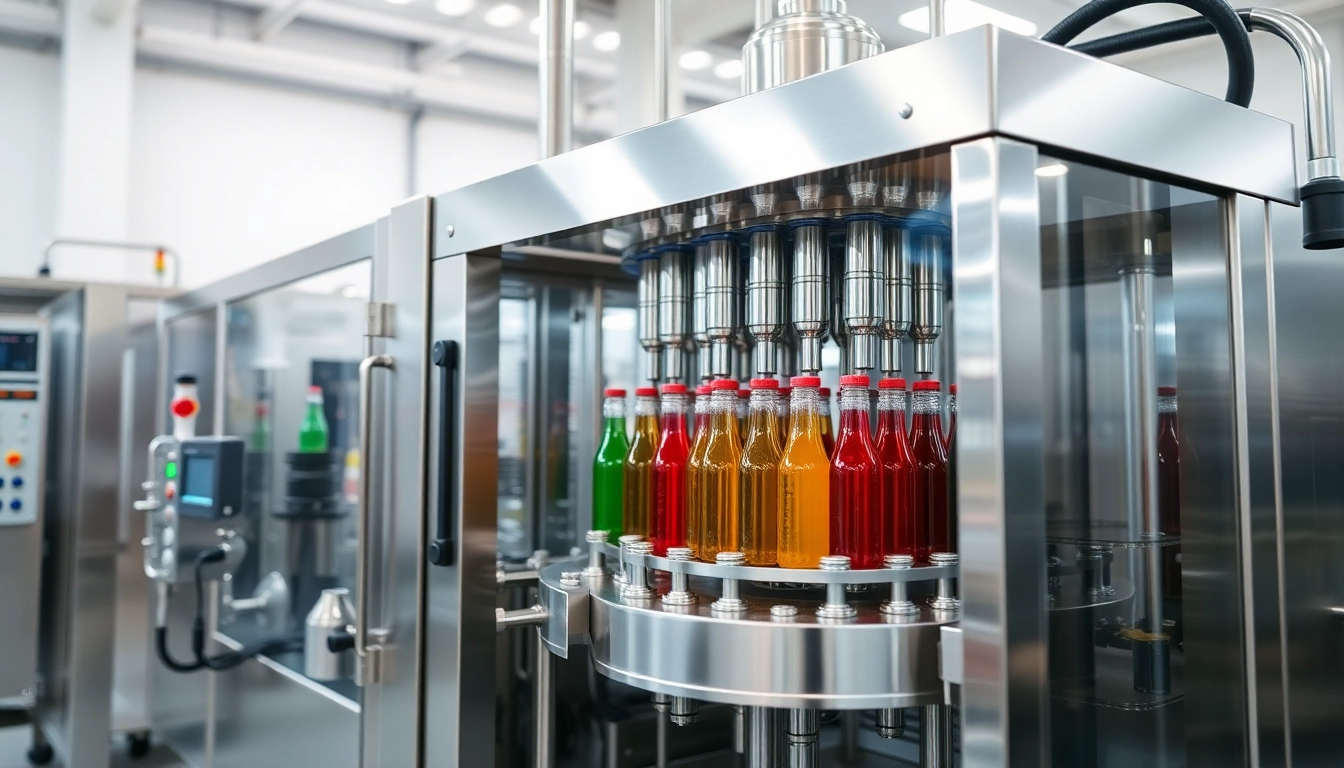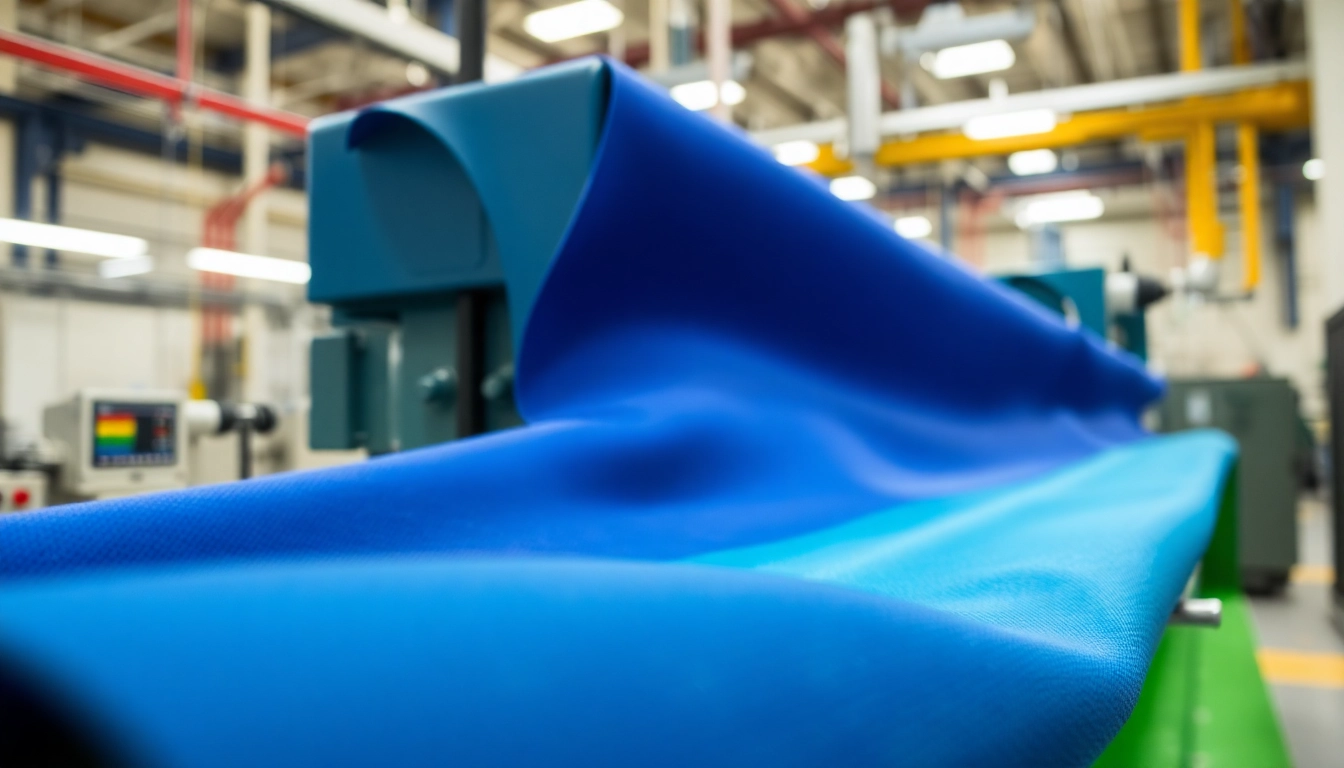Introduction to Filling Machines
Filling machines play a crucial role in the manufacturing and packaging processes across various industries, from food and beverages to pharmaceuticals and cosmetics. Designed to efficiently fill containers such as bottles, jars, and pouches with liquids, powders, or granules, these machines enhance production output while maintaining accuracy and consistency. The evolution of technology has significantly transformed filling machines, allowing manufacturers to automate processes and improve workflows. In this comprehensive guide, we will explore the intricacies of filling machines, their importance in manufacturing, the various types available, maintenance practices, and future trends. A well-chosen Filling Machine can indeed be a game-changer for any production line.
What Is a Filling Machine?
A filling machine is a specialized piece of equipment used to dispense a specific quantity of a product into a container. The liquids, powders, creams, and granules can vary significantly from one industry to another. For example, a filling machine might dispense water for bottling, shampoos for cosmetics, or powders for pharmaceuticals. The fundamental principle relies on delivering the precise amount of product needed, ensuring minimal waste and maximum efficiency.
Importance of Filling Machines in Manufacturing
Filling machines are essential for several reasons:
- Efficiency: They accelerate the production process, allowing businesses to meet high demand quickly.
- Consistency: Automated filling machines ensure uniformity in product portions, which is critical for quality control.
- Labor Cost Reduction: Automation reduces the reliance on manual labor, leading to lower operational costs.
- Scaling Production: They enable businesses to scale operations with ease, adapting to market changes and increasing output.
Key Features and Specifications
When evaluating filling machines, several key features and specifications are critical:
- Type of Filling: Whether volumetric, gravimetric, or by count, understanding how a machine fills is fundamental.
- Speed: Measure how fast the machine can fill containers to meet production goals.
- Accuracy: The precision of the volume dispensed is vital, especially for pharmaceuticals and food safety.
- Ease of Use: User-friendly interfaces and controls are essential for efficient operation.
- Cleaning and Maintenance: Machines should facilitate easy disassembly for cleaning, especially in industries with stringent hygiene requirements.
- Flexibility: The ability to adjust for different container sizes and types improves operational efficiency.
Types of Filling Machines
Manual vs. Semi-Automatic vs. Fully Automatic
Filling machines can be categorized based on their level of automation:
- Manual Filling Machines: These require human intervention where an operator controls the filling process, suitable for small-scale operations or handcrafted goods. However, they may lack consistency and speed.
- Semi-Automatic Filling Machines: These systems require some manual input but can operate at a higher speed than manual machines. They are ideal for medium-sized operations and can handle a variety of products.
- Fully Automatic Filling Machines: These machines operate independently, requiring minimum human oversight. They can manage high-speed production lines, enhancing efficiency and scale.
Choosing the Right Type for Your Needs
Selecting the appropriate filling machine hinges on several factors:
- Production Volume: Higher volumes generally favor fully automatic systems.
- Product Type: Different machines are optimized for various products such as liquids, powders, and solids.
- Budget Constraints: Initial investment costs vary widely based on automation level and features.
- Future Expansion: Consider potential scaling needs when investing in filling equipment.
Common Applications Across Industries
Filling machines find applications across various industries:
- Food and Beverage: Bottling water, filling jars with sauces, and packaging dry goods.
- Cosmetics and Personal Care: Filling bottles with shampoos, lotions, and creams.
- Pharmaceuticals: Dispensing syrups, tablets, and ointments.
- Chemicals: Filling containers with liquids and granules for industrial purposes.
How to Maintain Your Filling Machine
Routine Maintenance Checklist
To ensure optimal performance, routine maintenance is essential. Here are key tasks:
- Daily Checks: Inspect for leaks, ensure that all controls function correctly, and clean surfaces.
- Weekly Maintenance: Lubricate moving parts, inspect seals, and look for signs of wear.
- Monthly Inspections: Perform comprehensive checks on mechanical systems, sensors, and calibrate measuring devices as needed.
Common Issues and Troubleshooting
Operators may encounter issues impacting production efficiency. Common problems include:
- Underfilling or Overfilling: Check calibration and mechanical adjustments.
- Rapid Wear of Parts: Ensure that maintenance schedules are maintained, and replace worn components promptly.
- Product Leakage: Inspect seals and connections regularly to prevent spills.
When to Seek Professional Help
While many issues can be resolved in-house, some situations warrant professional assistance:
- When the machine exhibits persistent performance issues despite maintenance.
- If internal components require specialized repair or replacement.
- In case of electrical or software malfunctions that mandate technical expertise.
Benefits of Upgrading Your Filling Machine
Enhancing Production Efficiency
Upgrading to more advanced filling machines can streamline production processes. Here’s how:
- Increased Throughput: Modern machines offer higher speeds and reliability compared to older models.
- Reduction in Downtime: Reliability and fewer breakdowns improve overall productivity.
- Better Workflow Integration: New machines often come with improved IT integration capabilities, allowing smoother connections to other systems.
Improving Product Quality and Consistency
Enhancing the accuracy of the filling process translates to better-end products:
- Quality Control: Automatic filling machines minimize the risk of human error.
- Guaranteed Product Standards: Consistent fill levels help maintain quality assurance.
Cost Considerations and Savings
While the initial investment in a high-quality filling machine might seem daunting, the long-term savings make it worthwhile:
- Energy Efficiency: Modern machines often perform with higher energy efficiency, reducing utility expenses.
- Decreased Material Waste: More accurate fillings translate to less wasted product, improving the bottom line.
- Lower Labor Costs: With automation, companies can reduce their reliance on manual labor, saving significant costs over time.
Future Trends in Filling Machine Technology
Automation and Smart Technologies
The trend towards automation is strengthening across manufacturing, evidenced by the advent of smart filling machines that utilize IoT technology:
- Real-Time Monitoring: Machines capable of tracking their performance remotely provide alerts for maintenance or performance issues.
- Data Analytics: Collecting data on cycle times, fill accuracy, and maintenance needs can drastically improve operational efficiency.
Sustainability in Filling Machines
Modern filling machines are leaning towards sustainability:
- Eco-friendly materials: Manufacturers are exploring biodegradable and recyclable materials for construction.
- Waste Reduction: Improved precision in filling can reduce the amount of product wasted in spillage or overfilling.
Predicted Market Developments
The filling machine market is anticipated to experience significant growth. Key developments include:
- Increased Demand: As e-commerce continues to rise, manufacturers will need to adapt to changing consumer habits.
- Customization Enhancements: Machines will become more versatile, allowing businesses to customize filling lines for various products efficiently.
- Integration of AI: Artificial intelligence will play a critical role in optimizing production processes, from filling to packaging.



